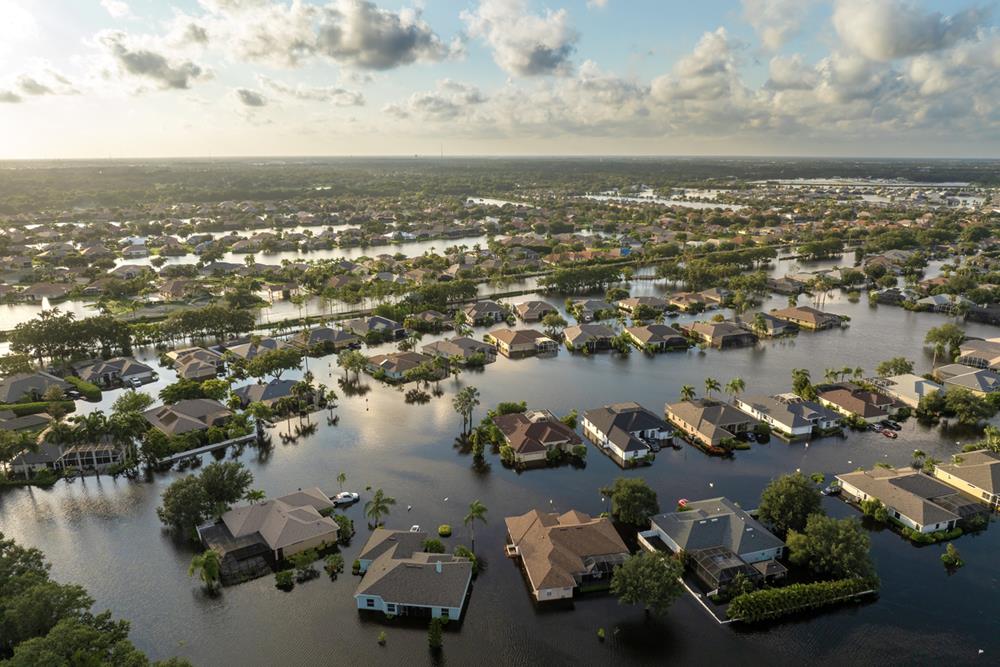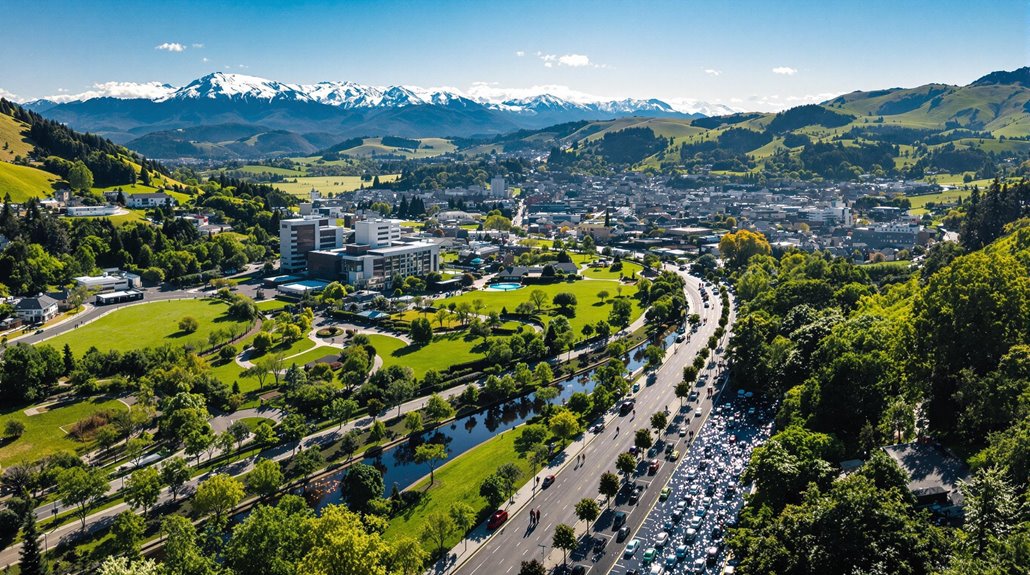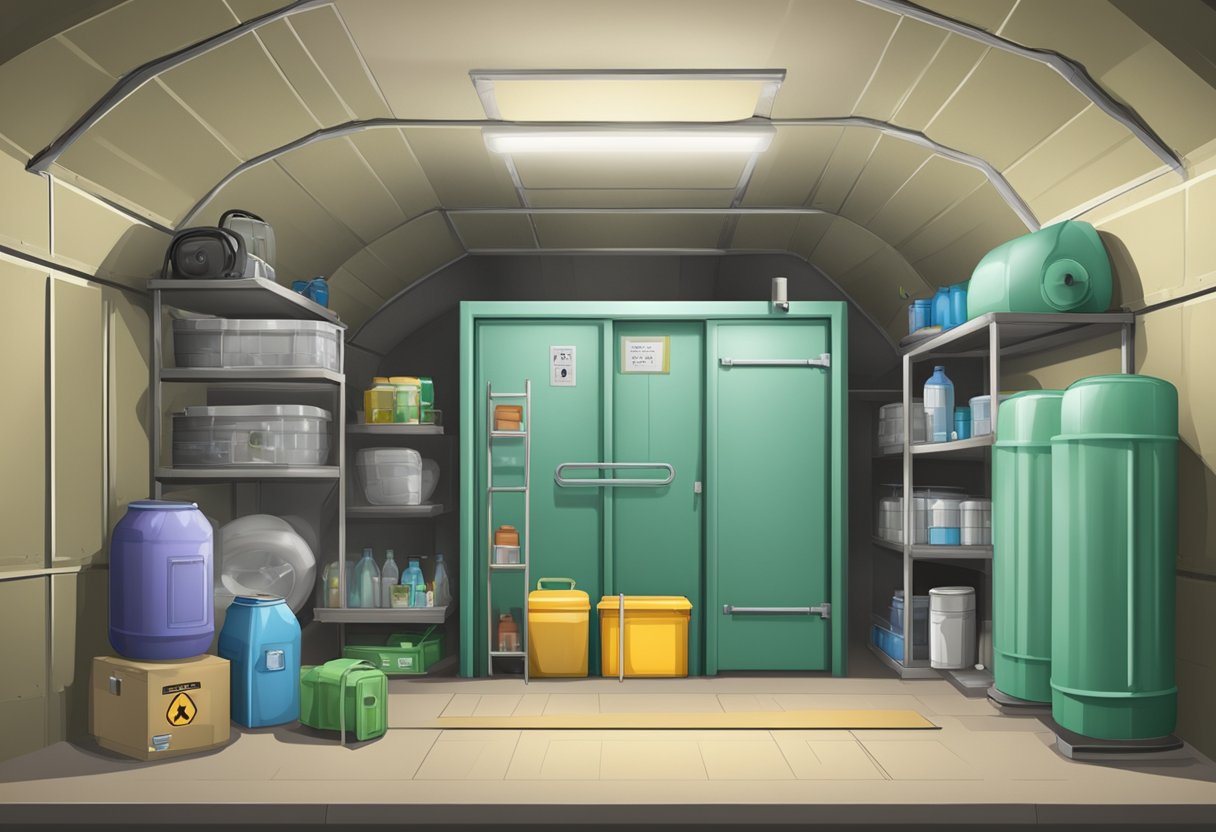The History of Fallout Shelters in the United States
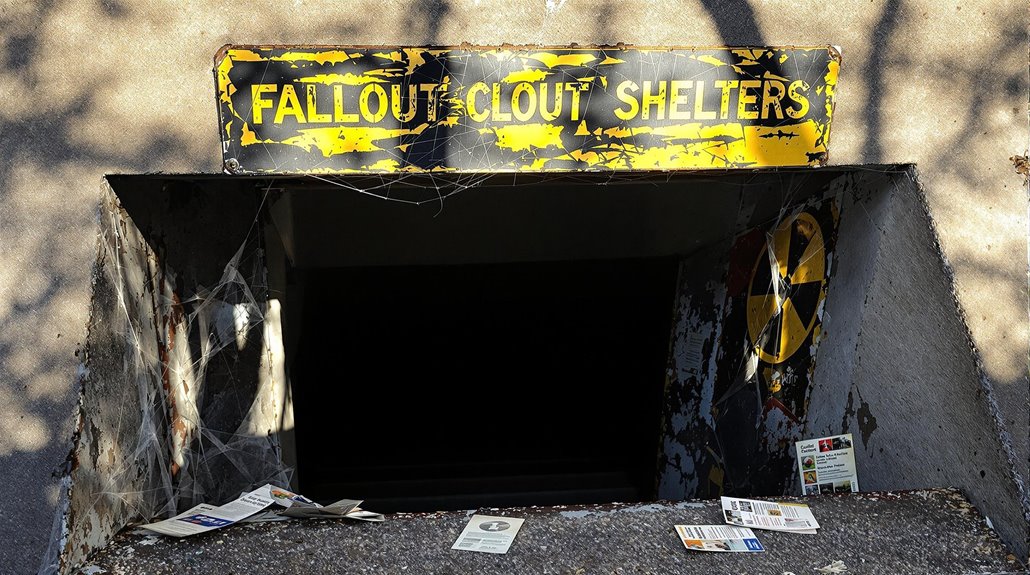
You'll find that fallout shelters emerged in the U.S. during the late 1940s as tensions with the Soviet Union escalated. The government launched extensive public awareness campaigns in the 1950s, encouraging Americans to build private bunkers and marking public buildings with distinctive yellow and black signs.
These shelters needed thick concrete walls, ventilation systems, and two weeks' worth of supplies. While many shelters now stand empty, their legacy continues to shape modern emergency preparedness.
The Cold War Origins of American Fallout Shelters
How did a geopolitical standoff shape America's approach to civil defense? As the Cold War intensified in 1947, fear of nuclear war between the United States and Soviet Union altered American life. The government's push for fallout shelters became a defining feature of this era, especially as both nations expanded their nuclear weapons tests.
You'll find the origins of America's shelter program deeply rooted in the 1950s uranium race, when the U.S. actively sought new deposits to build its nuclear arsenal. The heightened tensions of the 1960s, marked by the Berlin Crisis and Cuban Missile Crisis, made bomb shelter preparation even more urgent. Under Kennedy's administration, you were encouraged to create emergency response plans, while FEMA's 1983 Radiation Safety handbook showed how concerns about nuclear fallout persisted throughout the Cold War period. These underground structures required thick concrete walls of at least 8 inches to provide adequate protection against dangerous radiation exposure.
Government Programs and Public Awareness Campaigns
Three major government initiatives shaped America's fallout shelter awareness during the Cold War. The Federal Civil Defense Administration launched an extensive informational campaign in 1951, teaching you how to build a family fallout shelter. You'd find their distributed pamphlets explaining shelter construction in newspapers, libraries, and community centers.
During the Kennedy administration, you'd see defense officials promoting fallout shelters as a pivotal refuge to protect your family from nuclear fallout. They'd emphasize the importance of having proper ventilation, stored food, and water supplies. The government also marked public buildings with distinctive yellow and black fallout shelter signs, letting you know where to find safety during an emergency. These programs aimed to prepare you and your community for potential nuclear threats while maintaining public calm. Many citizens opted to build underground bunker shelters, which provided the most effective protection against nuclear fallout due to their thick walls and comprehensive air filtration systems.
Design and Construction Standards

Rigorous engineering standards governed every aspect of fallout shelter construction in 1950s America. You'd find these structures built with thick concrete walls and ceilings, often placed underground or in basements to maximize protection against radiation. The FCDA required all fallout shelters to achieve a protection factor of at least 40, meaning you'd receive only 1/40th of the radiation exposure compared to being outside.
You'd see carefully designed ventilation systems and power supplies to keep shelters habitable during extended stays. The government equipped these spaces with essential emergency supplies, including food, water, radiation detection devices, and sanitation facilities sufficient for two weeks of occupancy. Every detail, from communication systems to structural specifications, had to meet strict federal guidelines to guarantee your survival in the event of a nuclear attack. Regular long-term maintenance protocols were essential to ensure all systems remained functional and supplies stayed within their recommended shelf life.
Life Inside the Shelters: Supplies and Survival Planning
Living inside a fallout shelter meant careful resource management and strict adherence to survival protocols. You'd find a two-week supply of essentials: food, water, medical supplies, and radiation detection equipment stored behind secure doors. As the threat of nuclear war loomed, shelter administration kept strict control over resource distribution and duty assignments.
You'd rely on radiation monitoring devices to track exposure levels, helping determine when it's safe to venture outside. While the possibility of nuclear attack was frightening, the government sent clear guidelines for survival. The small amount of space required careful planning - from backup power systems to waste management solutions. You'd need to work with other occupants to maintain order, rotate responsibilities, and guarantee the shelter's air filtration and sanitation systems continued functioning throughout your stay. The shelter's water supplies were stored in dark, cool locations to prevent contamination and maintain potability during extended periods underground.
Legacy and Cultural Impact of the Fallout Shelter Era
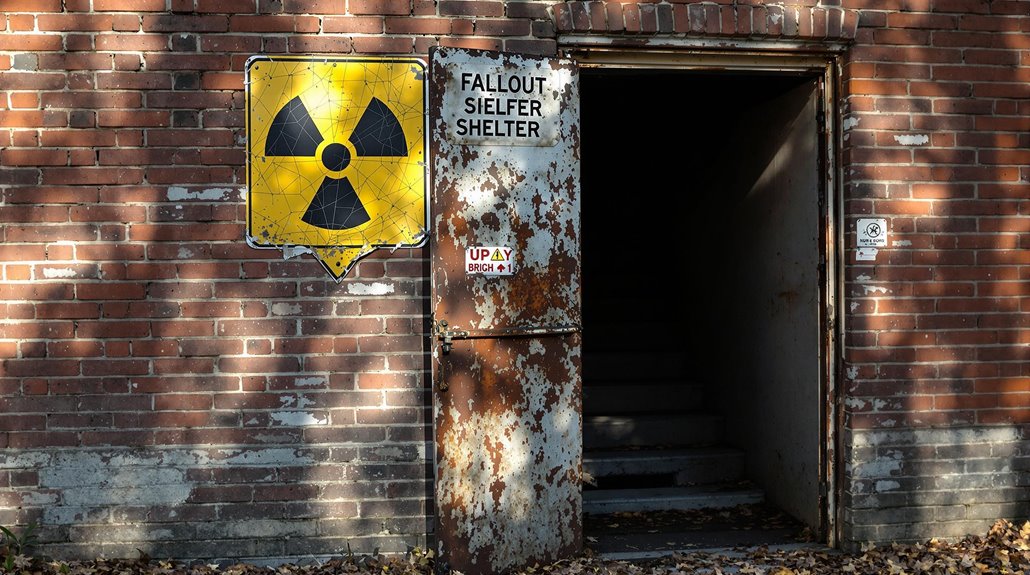
While families stocked supplies and planned for survival underground, fallout shelters became more than just physical spaces - they metamorphosed into powerful symbols of Cold War America. You'll find their influence spread throughout modern emergency preparedness, shaping how we plan for disasters today. During this period of time, the fear of radioactive fallout from an atomic bomb drove innovations in technology and construction methods, making it more likely to survive catastrophic events.
Even after the Partial Test Ban reduced the amount of radiation concerns, these concrete havens left an everlasting impression on American culture. From Ridge Photographs documenting shelter construction to today's renewed interest in emergency preparedness, fallout shelters continue to remind us of a unique era when ordinary citizens prepared for extraordinary circumstances.

